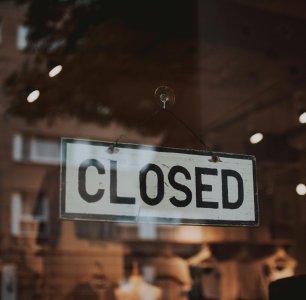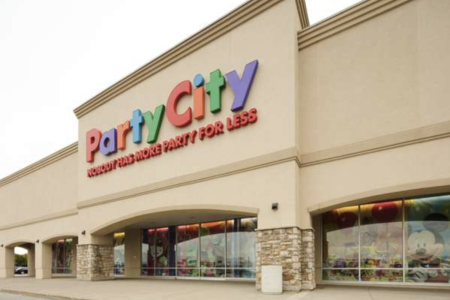Is your favorite store closing? The shocking forecast of 15,000 retail closures by 2025
By
Veronica E.
- Replies 0
The retail world is experiencing a major transformation, and it’s not just a small shift—it’s a complete overhaul.
As we approach 2025, we’re about to see an overwhelming number of store closures across the country—an estimated 15,000 stores. For those who cherish their regular shopping spots, this news might feel like a blow, but it’s essential to understand the bigger picture.
The pandemic may be behind us, but its lasting effects are reshaping how we shop and interact with stores we once knew as staples in our daily lives.
As we navigate these changes, it’s important to stay informed about how this will impact not just your shopping habits, but also your local communities and the future of retail as a whole.

A tidal wave of closures
Coresight Research, a well-respected leader in retail and technology insights, has released a forecast for 2025 that’s as unsettling as it is eye-opening. The predicted number of closures nearly doubles the 7,325 stores that shut their doors in 2024.
Meanwhile, new store openings are expected to be significantly fewer, with only around 5,800 set to launch in the same period.
Early reports are already showing over 2,000 planned closures, with household names like Big Lots, Macy’s, and Walgreens scaling back their physical presence.
However, it’s Party City that stands out with a jaw-dropping 738 stores set to close.
The top five retailers facing the axe:
The reasons behind the retail rout
John Mercer, head of global research for Coresight Research, shared some insights with The U.S. Sun, explaining that the closures stem from a "period of disruption and adjustment."
Emerging competitors, high-growth online businesses, and policy changes are all contributing factors.
Retailers are falling into three main categories of closures:
The impact of consumer caution and inflation
This wave of closures isn’t random—it’s largely due to the effects of inflation. Discount stores, which tend to serve consumers facing financial strain, were hit the hardest in 2024. Expect this trend to continue as consumer caution remains high.
Experts from UBS warn that we could see as many as 45,000 stores close over the next five years. Retailers across various sectors, including clothing, electronics, and home goods, will likely feel the brunt of this wave.
The silver lining: expansion amidst the closures
While the retail landscape may look grim, there’s still hope. Some companies are finding a way to not just survive but thrive.
For example, Sheetz is planning to open up to 60 new gas station locations, and Trader Joe’s is expanding into new states, much to the excitement of its loyal shoppers.
We know how important shopping habits are to your daily life, and these changes will undoubtedly affect how, where, and even what you shop for. But there’s a bright side—local businesses might see an uptick, and staying informed will help you adjust to these shifts.
Supporting small, local stores and being flexible will be key as we move through these turbulent times.

We want to hear from you—how has the retail landscape changed in your area? Have you seen a favorite store close down, or perhaps a new one open up? Share your thoughts with us in the comments below. We’re all navigating this shift together, and your experience can help others stay informed.
As we approach 2025, we’re about to see an overwhelming number of store closures across the country—an estimated 15,000 stores. For those who cherish their regular shopping spots, this news might feel like a blow, but it’s essential to understand the bigger picture.
The pandemic may be behind us, but its lasting effects are reshaping how we shop and interact with stores we once knew as staples in our daily lives.
As we navigate these changes, it’s important to stay informed about how this will impact not just your shopping habits, but also your local communities and the future of retail as a whole.

Retail giants are closing their doors in record numbers—what does this mean for you? Image Source: Pexels / lil artsy.
A tidal wave of closures
Coresight Research, a well-respected leader in retail and technology insights, has released a forecast for 2025 that’s as unsettling as it is eye-opening. The predicted number of closures nearly doubles the 7,325 stores that shut their doors in 2024.
Meanwhile, new store openings are expected to be significantly fewer, with only around 5,800 set to launch in the same period.
Early reports are already showing over 2,000 planned closures, with household names like Big Lots, Macy’s, and Walgreens scaling back their physical presence.
However, it’s Party City that stands out with a jaw-dropping 738 stores set to close.
The top five retailers facing the axe:
- Party City: 738 closures
- Big Lots: 601 closures
- Walgreens: 333 closures
- 7-Eleven: 148 closures
- Macy’s: 51 closures
The reasons behind the retail rout
John Mercer, head of global research for Coresight Research, shared some insights with The U.S. Sun, explaining that the closures stem from a "period of disruption and adjustment."
Emerging competitors, high-growth online businesses, and policy changes are all contributing factors.
Retailers are falling into three main categories of closures:
- Complete liquidations (e.g., American Freight)
- Distressed retailers undergoing Chapter 11 bankruptcy restructuring
- Legacy retailers adjusting to new market realities
The impact of consumer caution and inflation
This wave of closures isn’t random—it’s largely due to the effects of inflation. Discount stores, which tend to serve consumers facing financial strain, were hit the hardest in 2024. Expect this trend to continue as consumer caution remains high.
Experts from UBS warn that we could see as many as 45,000 stores close over the next five years. Retailers across various sectors, including clothing, electronics, and home goods, will likely feel the brunt of this wave.
The silver lining: expansion amidst the closures
While the retail landscape may look grim, there’s still hope. Some companies are finding a way to not just survive but thrive.
For example, Sheetz is planning to open up to 60 new gas station locations, and Trader Joe’s is expanding into new states, much to the excitement of its loyal shoppers.
We know how important shopping habits are to your daily life, and these changes will undoubtedly affect how, where, and even what you shop for. But there’s a bright side—local businesses might see an uptick, and staying informed will help you adjust to these shifts.
Supporting small, local stores and being flexible will be key as we move through these turbulent times.
Key Takeaways
- Retail giants are facing significant closures, with an estimated 15,000 stores set to shut down in 2025—almost double the number from the previous year.
- The number of store openings is expected to lag behind closures, with only about 5,800 new openings projected for 2025.
- Department stores, drugstores, and retailers catering to lower-income consumers are among those most impacted by the wave of closures.
- Several factors, such as consumer caution, inflation impacts, policy changes, and competition from low-price, cross-border retailers, are contributing to the trend of increasing store closures.
We want to hear from you—how has the retail landscape changed in your area? Have you seen a favorite store close down, or perhaps a new one open up? Share your thoughts with us in the comments below. We’re all navigating this shift together, and your experience can help others stay informed.







